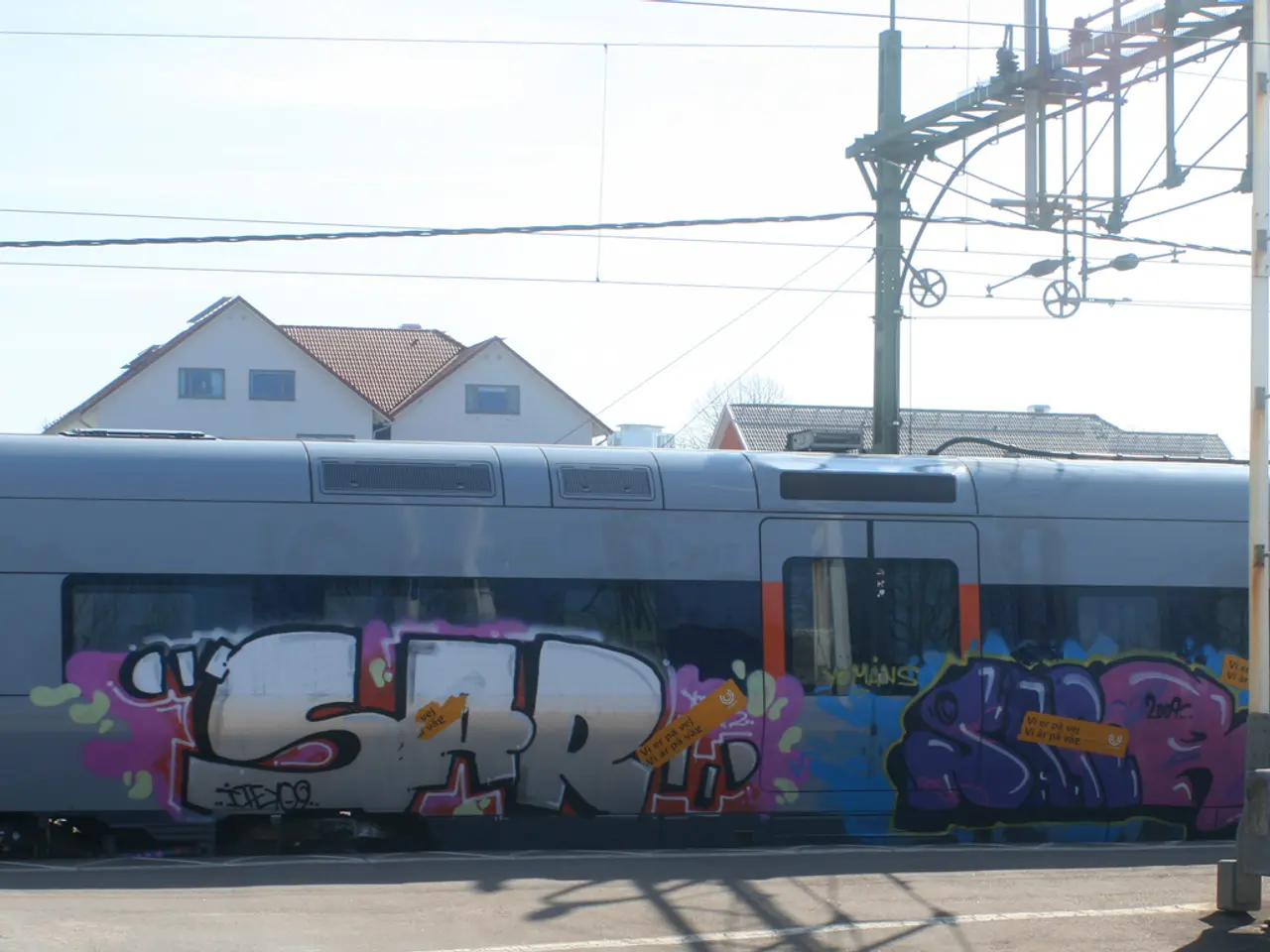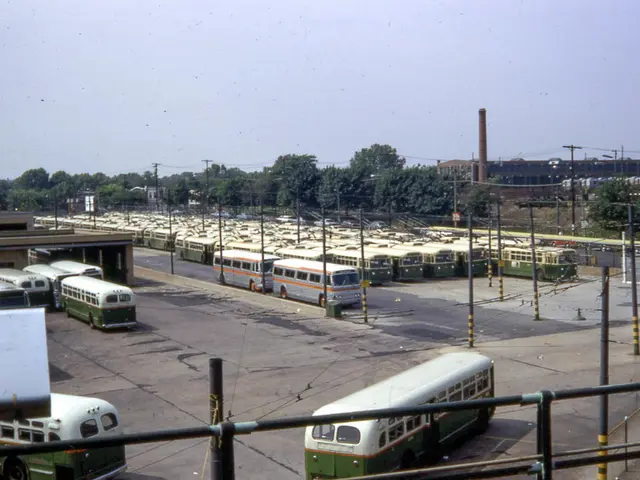Internal View of Oberkassel Bridge
The Rhine Bridge, a key landmark in Düsseldorf, is a diagonal cable-stayed bridge with a total length of 614.72 meters and a largest span of 257.75 meters. The bridge's structural area, along with the Oberkassel Bridge and the approach bridge, spans approximately 21,150 square meters.
These bridges undergo regular and systematic inspections according to DIN 1076, a German engineering standard. The inspection process involves regular structural inspections, detailed technical assessments, maintenance and repairs, traffic safety measures, and preservation efforts.
Every year, engineering structures like the Rhine Bridge are inspected without major aids, using available inspection facilities and accessible areas. Components are observed twice a year for apparent defects or damage, with only significant ones that potentially threaten stability and traffic safety recorded.
Every six years, these civil engineering structures undergo a comprehensive main inspection. For the Rhine Bridge, this includes a cable inspection, which is carried out every three years, during which any defects are subsequently eliminated. If significant changes or questionable defects/damages are found during a simple inspection, it is expanded to the scope of a main inspection.
During the simple inspection, the results of the previous main inspection are taken into account, and defects/damages marked in the corresponding protocol are checked. The simple inspection on the Rhine Bridge is a comparative inspection carried out three years after a main inspection.
Sonar investigations of the foundation components in the Rhine are carried out every three years on the large Rhine bridges. All engineering structures are continuously monitored for traffic safety as part of the general supervision of the traffic route and line controls.
The simple inspection also covers anchorages of components like touch protection, noise protection walls, and lines. It is an intensive, extended visual inspection, including functional parts such as bearings, joints, and transition structures.
For the Oberkassel Bridge specifically, as it is a key bridge over the Rhine in Düsseldorf, it would follow these rigorous inspection and maintenance standards set by Düsseldorf’s city infrastructure authorities in coordination with NRW (North Rhine-Westphalia) state agencies.
While no direct recent source on Düsseldorf Rhine bridges' inspection and maintenance was found, German bridge infrastructure is governed by regulations such as the “Richtlinie für die Überwachung und Pflege von Brücken” (Guidelines for the Monitoring and Maintenance of Bridges), which typically requires visual inspections at least once per year and thorough inspections every six years. Special inspections are also conducted after events affecting structural integrity, such as floods or accidents.
The bridges' strategic importance for urban traffic and their landmark status ensure that safety and preservation are parallel priorities in Düsseldorf’s public works planning. If you want exact official protocols or recent inspection results for the Oberkassel Bridge or other Düsseldorf Rhine bridges, contacting Düsseldorf’s municipal road and bridge maintenance department or the NRW Transport Ministry directly would provide authoritative, detailed information.
The Oberkassel Bridge was built between 1969 and 1976, with a new bridge required due to the planned city railway construction in the left bank of Düsseldorf. The old bridge was built beside the new one in 1976 and shifted by 47.50 meters after demolition. The Oberkassel Bridge has several predecessors, with the earliest bridge built in 1898 and blown up in 1945.
Technology plays a critical role in the regular inspection process of the Rhine Bridge, as sonar investigations of foundation components are conducted every three years. The Oberkassel Bridge, another key landmark in Düsseldorf, also undergoes these technological inspections and maintenance procedures to ensure its safety and longevity.




